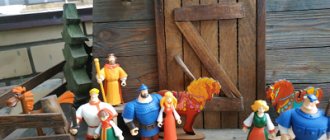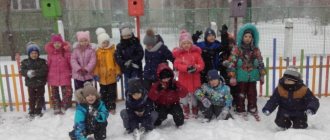Migratory and wintering birds
In summer there are a large number of birds. Everywhere there is an abundance of food for them - beetles, butterflies, midges, mosquitoes and other insects, various fruits and plant seeds.
But then autumn comes. There is less and less food for birds. First, insects disappear, plants gradually wither, and the number of fruits and seeds decreases. Many birds gather in flocks and then fly to warmer climes. First, those that feed on insects fly away, then those that feed on fruits and seeds of plants. Later, the ducks and geese fly away. They live with us until the water bodies freeze over. All these birds are migratory.
Some birds do not fly away from us - these are wintering birds, some of them store food for themselves for the winter. Thus, some tits and nuthatches hide insects, fruits and plant seeds in cracks in the bark and in the forks of tree branches. In autumn, birds increasingly fly to human habitation, since it is easier for them to find food here.[3,c 54]
Migratory birds - crane, nightingale, starling, swallow, rook, cuckoo, chaffinch, wagtail, thrush, lapwing, lark, robin, oriole, redstart and others. (see Appendix 2)
Wintering birds - nuthatch, tit, crossbill, woodpecker, bullfinch, sparrow, crow, goldfinch, siskin, pika, waxwing and others.
In the winter forest you can hear a woodpecker busily knocking, titmice, pikas, nuthatches and jays chirping. The wood grouse does not leave the winter forest either, because it always has food - tasty pine needles. But black grouse and hazel grouse eat alder catkins, buds and juniper berries.[5, p.28]
The amazing crossbill bird even manages to build nests and hatch chicks in winter. The crossbill feeds on spruce seeds, which it extracts from cones using its beak. Crossbills feed on spruce and pine seeds all winter. The seeds of these plants ripen by winter. This means that the most food for crossbills is available at this time of year. Therefore, these birds hatch their chicks in winter. There is snow and severe frost all around, but the cold is not scary for them, because they are always well-fed. [5, p.24]
Who flies away from their homeland and why?
Migratory birds include swallows, wild geese, starlings, rooks and many others. When cold weather sets in, they fly away to where it is warm, returning back to their native places, which they left in the fall.
Why do birds leave their native lands?
Among the main reasons are cold and lack of food. Winter time is not as scary for them as a lack of food. Birds are warm-blooded creatures, their average body temperature is about 41 degrees. In addition, the down under the plumage helps prevent hypothermia. Therefore, they are able to maintain their vital functions in harsh winters, which cannot be said about their activity without a sufficient amount of food.
What do birds eat in summer?
Mainly insects. All their living prey - bugs and worms - either die with the cold or go to sleep, hiding deep in the ground. Therefore, those who do not have grain or plant roots on their menu are forced to fly to warm countries where there are many insects.
Among the inhabitants of forests and populated areas, half of the birds are migratory. Almost everything that lives in swamps and reservoirs flies to where it is warmer. So, storks and herons get ready for a long journey when ponds and rivers freeze. It is difficult to get frogs and fish out from under the ice, and small rodents have long since hidden in their burrows.
Did you know?! The rook is the last to fly away. But he is among the first to return from wintering to his native land, somewhere between March 4 and March 23. That’s why there is an expression: “Rooks have opened spring.” After them, starlings and larks fly home.
Migratory birds
Migratory birds... Where is their home: here on earth? in the sky? or where they fly away from us for the long winter? Of course, here, where their babies are born - chicks!
Autumn. Rooks often circle in the sky. Their scream carries far across the area. What are they shouting about, they are probably saying goodbye to us until spring. I always like to look at the sky when migratory birds fly by. And the screams coming from the sky make me so sad, and I stand and see off the flocks, knowing that in the spring they will again delight us with their singing. This fall, work began on cutting down and improving our park. And I seriously thought: where will the birds fly in the fall? Do they recognize their park? Will they remain to develop life in the same place or will they choose another place?
The flights of birds have captured the imagination of man since time immemorial. Homer wrote about this 1000 BC. This is mentioned in the Bible. This question was studied by the great ancient Greek philosopher Aristotle. This phenomenon in the life of nature is truly remarkable. With the onset of autumn cold, many birds that lived in our forests and fields disappear. Instead, others arrive that we did not see in the summer.
And in the spring, disappeared birds appear again. Where were they and why did they come back to us? Couldn't they have stayed where they went for the winter? How do they find out about the flight time? How far do birds fly? And I began to look for answers to my questions about the life of migratory birds, reading books, watching TV shows, browsing websites on the Internet.
By bird migration we mean the movement of birds south in autumn and north in spring, their movement to the highlands or from the interior of the continent to the sea coast. Although the direction is determined not only by the location of wintering and nesting grounds, but also by the places lying along their path that are favorable for feeding and resting. Therefore, not all birds in the northern hemisphere fly from north to south in the fall. Many northern European birds fly west in the fall and winter in western Europe.
The question of why many birds fly away in the fall cannot yet be fully answered. But a careful study of the life of various migratory birds in nature shows that in this wonderful phenomenon the nutrition and associated habits of birds are of enormous importance. Birds move to warmer climates because many of them cannot survive in winter conditions. But there is evidence that our indoor canary can survive in temperatures down to -45° if it has enough food.
I came to the conclusion that birds fly away from us not because they are cold, but because they are hungry. In addition, in winter the days are mild and many birds simply do not have enough time to sufficiently satiate themselves with meager prey. Therefore, not only the temperature regime and the depleted food supply serve as a signal for departure, but also the changing length of the day! How birds can tell when the days are getting shorter (or longer) is still a mystery to ornithologists (people who study the life of birds)! Thus, the length of daylight and the disappearance of food tells the bird when to go to warmer climes. And the instinct of procreation in the spring suggests that it is time to fly back.
Science does not have a complete explanation for how birds find their way during migration or how they search for their homelands! There are suggestions that birds navigate by the sun, stars, the Earth’s magnetic field, landscape landmarks, smells, etc. Many birds, in order not to lose each other in flight, especially at night, make special sounds, scream and even sing. In addition, the bird uses its voice as an echo sounder.
The sound is reflected from objects in the bird's path and is picked up by its very sensitive hearing. Therefore, it does not bump into trees or rocks in the dark and, perhaps, even determines the distance above the ground. But they also take into account changes in the position of the sun and stars at different times of the day and year, and often fly in cloudy weather. Flights take place both during the day and at night. Night flights are typical for passerines and waders that feed during the day. Crakes and marsh hens migrate to wintering mainly on foot, only occasionally flying across bodies of water.
The average flight altitude of many birds is 450-750 meters. And small passerines fly below 100 meters, and geese even fly over the Himalayas, i.e. flying at an altitude of about 9000 meters. The average flight speed of small passerines is 50-60 km/h, for geese – up to 100 km/h, for swifts – up to 170 km/h. The length of the daily flight is also different: the stork has about 400 km, the cuckoo – 80 km, the rook – up to 60 km, and the time spent on the daily flight ranges from several hours to 30-40 minutes.
How far do birds fly from us? Wintering sites for migratory birds are constant. They winter where the natural conditions are similar to the living conditions in their homeland: forest - in wooded areas, coastal - along the banks of rivers, lakes, seas, steppe - in the steppes. Birds of some species fly alone, while others fly in groups or flocks. I had to watch the flight of cranes flying in a “wedge” (angle).
Bird flights are studied by ringing, by installing radio beacons or miniature video cameras. Airplanes and radio transmitters are used to track tagged birds. In our country, bird ringing began to develop at the beginning of the twentieth century. Over 1000 birds were ringed by the Latvian ornithologist G. Loundon (in 1907-1912). In 1935, the Central Bureau of Banding was created, headed by V. Vuchetich.
In 1946, the Zoological Institute of the USSR Academy of Sciences organized the first meeting on bird migration and ringing. In 1954. Nature reserves and other institutions have ringed more than 100 thousand birds, approximately 400 species. Through the efforts of G. Dementyev, A. Mekheev, V. Ryabov, T. Shevareva and others, 1889 is officially recognized as the year of the beginning of bird ringing, and the Dane Mortenson is the inventor of this method.
How do birds know when and where to fly?
When autumn approaches, migratory birds gather in flocks, arranging training, so that they can then fly for several hours, covering enormous distances, without losing their course. How do they do it?
Migratory birds can determine the road without a compass. Scientists have proven that they absolutely accurately determine their geographical location, flying long distances every year, perfectly oriented in time and space.
- Ornithologists believe that the sun at noon above the horizon can serve as a guide for them.
- Some experts are confident that for their path, birds use magnetic lines surrounding the Earth, which are located in the direction from the north to the south pole.
- There is also a version that birds know how to use the stars, determining their location by constellations.
Be that as it may, many experiments have already been carried out when birds were taken long distances, and they returned to their native nests over and over again.
Many people prepare for the flight in advance, when it is still warm. The instinct laid down by nature, like a bell, gives them the order to fly south to survive the winter and return back to hatch chicks. Scientists call this the migratory impulse, which serves as the start for the flight. Also, the trigger that calls for flight is the changed length of the day. By the beginning of autumn, daylight hours become shorter.
When flying, some species reach speeds of up to 100 kilometers per hour, rising to a height of 3 thousand meters. Bird travel is associated with difficulties and dangers. The smaller the bird, the shorter its path in one flight. Birds are capable of not stopping for 80 hours or more! They interrupt their flight to gain strength and feed, so long-distance flights can last up to three months.
Did you know?! The migratory bird cuckoo flies to Africa. But unlike other birds, no one has yet observed these birds in flocks. They strangely disappear in the fall, with the older ones earlier than the younger generations. And they usually fly at night and, probably, alone.
How do birds winter?
To help birds in winter, you need to know which birds spend the winter and what they feed on? Winter for sedentary birds is a period of tough survival. Cold at their body temperature is not as terrible for them as hunger. It is from malnutrition that the small bird population in our area is dying day after day. During a short winter day, birds are simply unable to find and eat as much food as they need.
If food is available, birds can withstand even severe frosts. In many birds, the body temperature constantly remains within 42 degrees Celsius, and in small birds it reaches 45 degrees [1, p.76]. Here’s a regularity: the smaller the bird, the more intense its thermal balance, the higher its body temperature.
Pigeons, woodpeckers, and sparrows live side by side with us all year round. Sparrows are very small birds, but very active. They are not afraid of our cold weather. Who is the first to open a frosty winter morning when you are afraid to stick your nose outside? Sparrow! Who is the first to announce the beginning of spring? Sparrow! Therefore, do not drive these birds away from the feeder, pour some bread crumbs into the feeder once again, throw a handful of grain by the porch - and honestly, the sparrows will thank you for your attention in the summer!
That’s why feeders are so important!
To which countries do migratory birds fly?
Many of them love Africa. Birds even fly there from the Arctic and Siberia. Most waterfowl, such as ducks and swans, winter in western Europe. From Russia, blackbirds and starlings move to the French or Spanish south, but cranes are lovers of the banks of the river called the Nile. Among the long-distance marathon runners are windbreakers from Eastern Siberia. They chose the shores of New Zealand for wintering.
However, among migratory birds there are patriots who move within our country closer to the warm domestic south. Among them are the hooded crow and the black rook.
Did you know?! Some species of ducks called “mallards” cross more than one country on their way to their wintering grounds. They fly over Belarus, Ukraine, through Germany and Holland, through Denmark and Great Britain, as well as across northern Italy and, ultimately, stop in western Europe.
How to properly organize feeding of birds?
The main rules when feeding birds: Do not feed birds salty foods and rye bread (this is deadly for them)! If you start feeding birds once at the beginning of winter, make sure that there is food in the feeder every day!
The feeder should be convenient and safe for birds (tight fit, no sharp edges, inaccessible to the neighbor’s cat)! Hang the feeder so that small and agile birds can get there, but not pigeons and crows (for which there is enough food even outside)! If possible, the food should be protected from the weather! The feeder must be cleaned regularly!
What to feed your feathered guests?
Remember that you should not give your birds salty food or black bread!
It is unacceptable to feed any salty, fried, spicy, or sour foods. Rye bread is very dangerous - it sours in the birds' crops and is poorly digested, especially in cold weather. Birds should not be given citrus fruits (oranges and lemons), banana peels, or spices. For feeding you can use:
Unroasted seeds of sunflower and pumpkin, watermelon and melon, hemp Cones, acorns, nuts, for example, peanuts Millet, millet, oats, wheat, rolled oats (raw!) Bunches of weeds - quinoa, nettle, horse sorrel, burdock, etc. . Bunches of viburnum, rowan, black and red elderberry berries Crumbs of stale wheat bread Maple and ash seeds Pieces of unsalted lard, meat and fat Apples
You can feed almost any bird. Preparations for this must begin in the summer by preparing food. [1, p.34]
Popular message topics
- Information modeling
A model (substitute object) is an object that replaces a real object (prototype, original). Among other things, we can say that any visual aid can be called a model. - Works of Anatoly Aleksin
Anatoly Georgievich Aleksin is a famous Russian classicist, playwright and screenwriter. He was born in Moscow in 1924. Real name is Goberman. Anatoly's father was a teacher at the Institute of Economics, - Sights of Moscow
Moscow is one of the most beautiful cities not only in Russia, but also in the world. It has always attracted tourists, both adults and children. Of course, an adult here has more opportunities for what to see and where to go,
Making a bird feeder
Our feeder is made of plywood in the form of a house without closed walls, but with a roof to prevent snow from falling in (see appendix). We attached it right outside the window of our apartment to a metal beam. Our feeder is installed firmly and does not swing in the wind, so it is very comfortable for birds to sit on it. [4]
Every morning I poured grain and bread crumbs into the feeder, the birds eat everything during the day, so by evening the feeder is already empty. Next to the feeder, I also tied a piece of lard; the birds did not have time to eat it in a day; it was enough for them for several days.
After feeding the birds for a week, I decided to look at the behavior of the birds if there was no food in the feeder. In the morning, the birds flew in as usual, but not finding food, they flew away. On a tree where a large number of birds usually gather during the day, when the feeder was full there was not a single bird. But as soon as I opened the window to pour food into the feeder, I noticed that the birds began to slowly flock to the tree near my window. And literally a few seconds after I poured the food on the feeder there was no end to the birds.
Conclusion: birds remember the place where they fed and fly there again.
What birds usually come to the feeder? Two species of birds flew to my feeder: sparrows and tits. Birds' food preferences. Most of all I was interested in the question, what do sparrows and tits like to feast on in winter?
Starting to study this issue, I noticed that sparrows and tits are rare guests in the yard. My parents are tidy owners, so our yard is always clean.
When dad helped me hang the feeder, my brother and I put food in them. Taking into account the knowledge from the outside world that these birds have a characteristic small and very strong beak, which is convenient for chewing grains and seeds, I selected seeds, millet and buckwheat for them. For 5 days I observed the number of birds at the feeder.
As a result, it turned out that sunflower seeds are more popular among birds. But they didn’t want to peck the buckwheat at all; it remained intact in the feeder throughout all the experimental days. I also managed to find out that on the first day several tits flew in for reconnaissance, and by the 5th day a whole flock had gathered at the feeder. At one time I could count up to 15-20 birds at the feeder.
The sparrows were very wary of the feeder. There were much fewer of them in it. But unlike tits, they sat comfortably and stayed for a long time in my dining room. The tits behaved very culturedly. They quickly flew in and sat on the edge of the feeder. Having grabbed the seed, the tit flew off to the branch of a neighboring tree. In 1 hour, she made about 5 such flights to the feeder. According to my observations, she made about 5. So I calculated that she spends about 8-10 minutes cleaning and eating one seed. It turns out that in a short winter day the tit makes 40 flights. This means that per day she eats up to 40 seeds, which she needs so much not to freeze.
Later, I decided to diversify the lunch of my guests. She began to sprinkle bread crumbs onto the snow crust and hung pieces of fresh lard and meat on the branches. Then the taste preferences of my guests were completely divided. The tits were actively pecking at the lard and meat, and a whole flock of sparrows gathered around the crumbs. Thus, I found out why you see tits more often in trees, and sparrows on the road and near garbage cans. These are common places to search for food. Here they feel more comfortable and eat food more actively.
After observing the birds more closely, I learned that sparrows always stay in groups. From a textbook on the surrounding world, I learned that such groups are called flocks [7, p. 36]. The tits sit in groups of several and stay separate from everyone else. If there are sparrows on a tree, then you will not see tits on it. They will try to position themselves on a nearby tree. You rarely see tits on the ground searching for seeds and crumbs. But a flock of sparrows boldly jumps in search of food.
Based on the above, first I want to display data reflecting the behavior of birds in the form of a table.(1)
| Observation position | Tit | Sparrow |
| 1. Are they found in winter and summer? | They live near human habitation in winter. In summer it is extremely rare to see | Live near human habitation all year round |
| 2. Where can I meet? | Anywhere in the city. | Anywhere in the city |
| 3. How can you see birds in the village? | Individual birds or small groups of up to 5. | Flocks of up to 30 birds. |
| 4. Where are birds most often found? | There are 1-2 birds on the trees. | There are flocks of 20-30 birds on the trees and ground. |
| 5. What are the food places? | Trees with berries and bushes with seeds. | Garbage containers, trees with berries. |
| Types of birds arriving at the feeder | Behavior and number of birds arriving at the feeder. | Behavior among themselves | ||||
| 1 day | Day 2 | Day 3 | 4 day | 5 day | ||
| tits | Few birds arrive, behavior is very cautious. They sit on the feeder one at a time. | More birds arrive compared to 1 day, behavior is calmer compared to 1 day. One or two birds sit on the feeder at a time. | The same number of birds arrive as on the second day, the behavior is calm. One or two birds sit on the feeder at a time. Sometimes they arrive in groups of three. | More birds are flying in, behavior is calm | The number of birds has increased, behavior is calm. | Larger birds drive away smaller ones. Sparrows are treated calmly. |
| Sparrows | Did not have | Did not have | A small flock arrived and behaved cautiously. Several individuals sit on the feeder. | The flock arrived a little larger, they behave less cautiously. Several individuals sit on the feeder. | The number of birds is increasing. They sit on the feeder in groups. Calm behavior. | Calm attitude towards everyone. They don’t compete, they wait for their “turn.” |
Further, the table shows my observations of the behavior of birds directly at the feeder.
Conclusion
My observations helped me learn more about the life of a small piece of living nature.
Birds are an important part of wildlife. Tits and sparrows live near human habitation in winter. This is related to the search for food and places to sleep.
Birds are not afraid of winter if they have food. The bird is full and warm under its down and feathers. Therefore, it is very important to feed birds in winter, because when the bird is full, it doesn’t mind the cold.
By hanging feeders in gardens, parks, and near our houses, we not only help birds, but also protect trees, because if birds constantly find food in some place, then in the summer they will fly here and protect the plants from harmful insects.
It is very important that birds, these beautiful creatures, tireless workers, full of attractive secrets for humans, live happily on our land!
Bibliography
Birds. Encyclopedia of Russian Nature./ Ed. V. Flint - M., 1996 Malchevsky A.S. Ornithological excursions. – L.; Leningrad State University, 1981 Klepinina Z.A. Natural history. Educational edition. Education, Moscow, 1992. Internet sources. Everything about everything. Popular encyclopedia for children / AST. Moscow.: . — 1997 Savenkov A. V. Research training for junior schoolchildren. /Samara: Publishing House "Educational Literature". - 2010. Fedotova N.O., Trafimova G.V.. The world around us. Textbook/Moscow: Akademkniga. – 2010 Shumakova N.B. Development of research skills of junior schoolchildren. /Moscow. Education. – 2011
Project "Migratory Birds"
Mixed age group
Project goal : to consolidate children’s previously acquired knowledge about migratory birds; promote the development of cognitive activity and curiosity; broaden their horizons and enrich children’s vocabulary, instill a love for nature and cultivate a caring attitude towards it; Strengthen the relationship between parents and children.
Objectives: expand and enrich children’s knowledge about migratory birds; teach children to write a descriptive story using pictures; develop monologue and dialogic speech; develop fine motor skills of the hands; teach to identify and name their characteristic features: plumage, size, voice; develop observation and memory; develop a kind attitude towards birds.
Type of project : group, family, short-term.
Implementation time : 1 week.
Project participants : children from 4 to 6 years old, parents of pupils and a teacher.
Relevance of the project : in modern conditions, the problem of environmental education becomes particularly acute and relevant. It is during the period of preschool childhood that the formation of the human personality and the formation of the beginnings of ecological culture take place. Therefore, it is very important to awaken children’s interest in living nature, cultivate a love for it, and teach them to take care of the world around them.
Problem:
— Insufficient knowledge of children about migratory birds.
— Loss of moral forms of modern parents.
Expected results:
1. Creation of the necessary conditions in preschool educational institutions for the formation in preschoolers of a holistic understanding of migratory birds;
2. To interest children together with their parents in caring for birds, the desire to help them (making birdhouses), competition-exhibition of birdhouses “The Best Birdhouse”;
3. Joint activities will help strengthen the relationship between parents and children;
4. Development of curiosity, creativity, cognitive activity, and communication skills in children;
5. Active participation of parents in the implementation of the project.
Project ideas:
- Development of cognitive abilities of preschoolers and parents.
- Showing children's interest.
- Preparing the parent to cooperate with the teacher and the child.
The project is based on the scientific principles of its construction (in accordance with the Federal State Educational Standard).
— Variability: creating conditions for the child to independently choose methods of work, types of creative tasks, materials, equipment, etc.
— Reliance on internal motivation: taking into account the child’s experience, creating his emotional involvement in the creative process, which ensures a natural increase in performance.
— Comfort: an atmosphere of goodwill, faith in the child’s strengths, creating success for each situation.
— Immersion of each child in the creative process: the implementation of creative tasks is achieved through the use of active methods and forms of learning in their work.
Stage 1: Preparatory.
Reading stories and poems about birds. Looking at pictures and illustrations of birds. Involving parents in joint activities. Didactic games.
Stage 2: Basic.
Conversation on the topic “Take care of the birds!” Reading fiction about birds. "Evening of mysteries." Recognizing birds by description, by habits (pecking, flying, building a nest).
Cognitive development.
Birds that arrive in spring. (Rook, starling, swallow, lark.)
— To consolidate children’s knowledge about migratory birds and their names: rook, starling, lark, swallow. (Children listen to stories and poems about birds, look at pictures and illustrations in a group on the board.)
Artistic and aesthetic development. Construction
Houses for birds (from the designer available in the group).
— Learn to make simple buildings and play with them. Develop skills of analysis and comparison, compare by species, habitat, characteristics of housing, nutrition, breeding chicks.
Speech development.
Learning and reading poems about migratory birds, discussing proverbs and sayings, signs about birds. Guessing riddles about birds. Reading fiction about birds
K.D. Ushinsky “Swallow”; N. Sladkov “The rooks have arrived”; V. Zhukovsky “Lark”; A. Pleshcheev “Rural Song”; O. Vysotskaya “Cranes”; A. Maikov “The Swallow has rushed”; N. Sladkov “Swallow”.
Artistic and aesthetic development. Drawing.
Arrival of birds.
— Learn to compare and convey in a drawing the characteristic features of the structure of birds; show the beauty of migratory birds and their chicks.
Artistic and aesthetic development. Modeling.
"Rooks."
— Show the beauty of natural objects: migratory birds and their chicks; create decorative compositions from figurines of birds, trees, nests, “Bird Yard”; develop fine motor skills.
Stage 3: Final.
Summing up the implementation of the project “Migratory Birds”.
Exhibition of children's drawings and crafts. Exhibition of birdhouses.
Conclusion.
As a result of their work, the children received a lot of new information about migratory birds. We learned about their life, the habits and differences of birds. We had great fun sculpting and painting birds. We took part in making birdhouses, which helped strengthen the relationship between parents and children. The group's educational environment was replenished with literature, poems, illustrations, stories, and messages about birds prepared by parents. The main result of the project is that children learn that everyone, both children and adults, should help the birds. Children proudly show their birdhouses, which are located on the site, to all guests. They became more responsive and kind.





